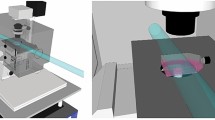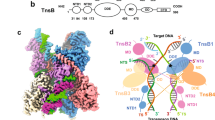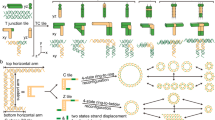Abstract
The involvement of catalytic iron in the vitro activities of crocidolite asbestos has been investigated. Exposure of C3H10T1/2 cells to either the UICC crocidolite standard reference sample or a non fibrous (milled) derivative resulted in an increase of thiobarbituric acid reactive substances. This catalytic activity was inhibited by pretreatment with the iron chelator desferrioxamine. The effect of this activity on cellular DNA was measured in an assay based on the production of DNA-strand breaks. Increased levels of DNA-strand breaks were detected in cultures treated with both the milled and UICC crocidolite. Inclusion of desferrioxamine with the asbestos inhibited DNA-strand breakage. It is concluded the catalytic iron present on the dust is capable of damaging both lipid and DNA and that this could be an important mechanism in asbestos pathogenicity.
This is a preview of subscription content, access via your institution
Access options
Subscribe to this journal
Receive 24 print issues and online access
$259.00 per year
only $10.79 per issue
Buy this article
- Purchase on SpringerLink
- Instant access to full article PDF
Prices may be subject to local taxes which are calculated during checkout
Similar content being viewed by others
Author information
Authors and Affiliations
Rights and permissions
About this article
Cite this article
Turver, C., Brown, R. The role of catalytic iron in asbestos induced lipid peroxidation and DNA-strand breakage in C3H10T1/2 cells. Br J Cancer 56, 133–136 (1987). https://doi.org/10.1038/bjc.1987.170
Issue date:
DOI: https://doi.org/10.1038/bjc.1987.170
This article is cited by
-
Quantitative detection of asbestos fiber in gravelly sand using elastic body-exposure method
Journal of Industrial Microbiology & Biotechnology (2006)
-
Dietary and prophylactic iron supplements
Human Nature (1990)



